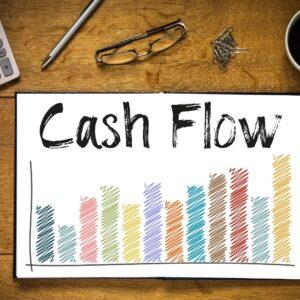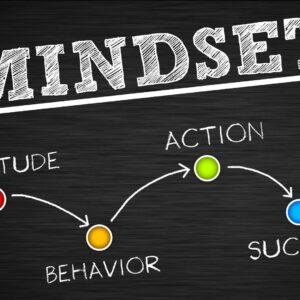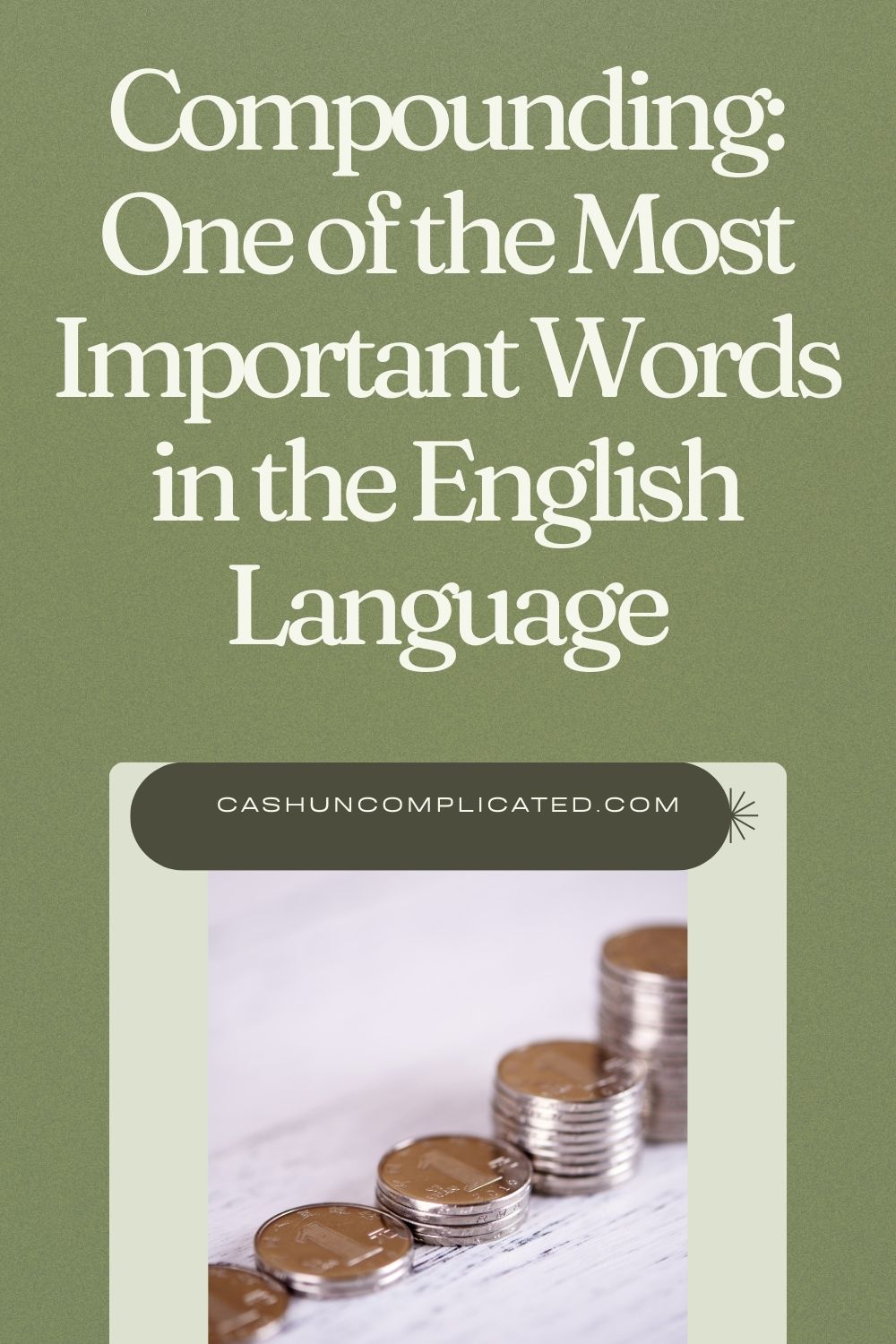In personal finance, debt is arguably the most written about topic. Millions of people are in debt and not surprisingly, the topic is at the forefront of many people’s minds. Look online and you’ll find a variety of topics related to debt:
- How to get out of debt
- Is there such a thing as good debt?
- Why get out of debt?
- Is student loan debt bad?
- And much more
For this post, I’m not going to attempt address all of these topics. Rather, I’m going to take a deep dive into the psychology of debt, an often overlooked component of debt. Many people understand the numbers behind bad debt but don’t fully appreciate the psychology behind debt. Once we gain insight into the psychology of bad debt, it becomes much easier to pay off and avoid in the future.
What is Bad Debt?
The first question that should be answered in this post is what is bad debt? A definition will create a framework we can work off for the rest of the post. There are many different definitions for bad debt, but for the purposes of this post, I’m going to define bad debt as: Any debt that does not create income for you or have the opportunity to appreciate.
This definition mostly pertains to consumer debt like credit cards, car loans, store credit, etc. For example, a credit card with a balance and monthly payments of $500 is bad debt because it’s money coming out of your pocket every month. You are paying off that debt off on your own as it’s not tied to any income producing asset or something with the opportunity to appreciate.
What About Good Debt?
To answer the question about bad debt, it’s helpful to briefly address good debt. Although some people will tell you all debt is bad, I respectfully disagree. In my book Cash Uncomplicated, I give two definitions of good debt. Those definitions are:
- An investment that makes money. Examples include cash flowing real estate and a positive cash flow business.
-
- Example: A rental property with a debt payment of $1,000 per month including principal, interest, taxes, insurance, repairs, vacancy allowance, capital expenditures, and miscellaneous expenses. Property rents for $1,300 per month and cash flows $300.
- Debt on an investment that is reasonably expected to go up in value over time based on years of data, and you are expecting to hold the asset for many years.
- Example: A home you live in, or plan to live in for multiple years. Historically, homes have appreciated, even with fluctuations in the market. The appreciation combined with debt pay down has been a tremendous generator of wealth for many people. There is no guarantee the house will appreciate but historical data suggests it will. Think about conversations you’ve had with relatives who bought their homes in the 1990’s for under $200,000 that are now worth upwards of a million dollars.
These two definitions are purposefully brief—the intent is to give a basic definition to help understand bad debt versus good debt. For more detailed analysis, read chapters seven through nine of my book.
Types of Debt Payoff
There are three primary strategies people use to pay off bad debt. The debt avalanche, debt snowball, and hybrid method. To provide basic definitions, we will briefly cover the three strategies using short examples. All three strategies covered involve focusing on paying off one debt at a time while making the minimum payments on the other debts.
For more detailed info on paying off debt and utilizing payoff strategies, here are a few resources:
Related Posts:
- Debt Snowball, Debt Avalanche, or Hybrid Method—Which Should You Choose?
- What if you Sold Your Debt Instead of Paying It Off?
Debt Avalanche
Pay off the debt with the highest interest rate first and then work to the next highest interest rate. This is done until all consumer debt is paid off. The focus is on the interest rate, not the balance of the debt. For example, if someone has four bad debts that need to be paid off:
- $2,500 debt at 7% interest
- $500 debt at 3% interest
- $7,300 debt at 5% interest
- $900 debt at 4% interest
Using the debt avalanche, the debt would be paid off in the following order:
- $2,500 debt at 7% interest
- $7,300 debt at 5% interest
- $900 debt at 4% interest
- $500 debt at 3% interest
Notice the order of the interest rates—they go from highest to lowest. Then, the money used to pay off the first debt is used to pay off the next debt, and so on. This is the optimal way to pay off debt looking at just the numbers, but it doesn’t factor in the psychological component of paying off debt.
Debt Snowball
The debt snowball highly factors in the psychology of debt. The idea behind this strategy is to pay off debt from least to greatest, giving the person paying off the debt psychological wins after each debt is paid off. This is especially impactful for someone with multiple debts.
Using the same numbers as the example in the debt avalanche, this is the order the debts would be paid off using the debt snowball.
- $500 debt at 3% interest
- $900 debt at 4% interest
- $2,500 debt at 7% interest
- $7,300 debt at 5% interest
Even though the smallest debt also has the lowest interest rate, it’s still paid off first using this strategy. The concept is to eliminate the small debt and provide the person with an early “win.” Then the money used to pay off the smallest debt goes towards the next highest debt.
Hybrid Method
The hybrid method combines principles from the debt avalanche and debt snowball. Like the debt snowball, it’s particularly useful for someone with multiple bad debts. Using the same numbers from the other examples, someone using the hybrid method might pay off the debt in the following order:
- $500 debt at 3% interest
- $2,500 debt at 7% interest
- $900 debt at 4% interest
- $7,300 debt at 5% interest
Using this strategy, the $500 debt is paid off first just to get rid of it, gain some confidence, and earn a quick victory. Then the highest interest debt is paid off to eliminate the high interest rates. After that, the $900 debt is paid off since it’s relatively small compared to the tall task of paying off $7,300 at 5% interest
With the hybrid method, you can go in any order you want—the key is picking one debt to focus on at a time and staying consistent. There is a psychology of debt payoff using the hybrid method because it enables you to get off to a quick start (snowball) and then work towards optimization (avalanche).
The Psychology of Debt and the Challenges of Paying Off Bad Debt
Much like playing sports isn’t just about the X’s and O’s, the psychology of paying off bad debt isn’t just about the numbers. If it were just about the numbers, it would be easy to pay off. Make a plan, execute, and you’re done. In the real world though, there are psychological challenges that need to be overcome. Here are a few of those challenges.
Number 1: Looking Too Far Ahead
If you’ve ever had bad debt like I have, you know it’s easy to look too far ahead. We’ve all had those moments where we run the numbers and learn it’s going to take years to pay off the debt at our current pace. Unless we benefit from a financial windfall like getting a much higher paying job, earning money from a side hustle—or winning the lottery.
Sometimes looking too far ahead means a year or two, other times it means five plus years. It can be very frustrating watching the results come slowly knowing you’re doing all the right things to pay off the debt.
Number 2: Hopelessness
Taking the correct action steps and still making slow progress is not only frustrating, but can also lead to hopelessness. The psychology of debt payoff can feel like running on a hamster wheel. Even though you’re running as fast and as efficiently as possible, the debt is still there.
Although the debt is being reduced, it feels like you’re barely making a dent. This can feel like an exercise in futility, which often feels like hopelessness.
Number 3: Feelings of Being Overwhelmed
Imagine someone with the following debts:
- Credit card #1: $4,500
- Credit card #2: $3,700
- Credit card #3: $2,900
- Car payment: $600/month
- Store credit card: $480
- Student loans: $400 monthly payments for the next 20 years
- Personal loan: $6,300
This is a long list of debts. These aren’t my debts, but even the act of writing them down makes me a little anxious (seriously). Even if someone is on the right track to paying off debt, a long list of debts is enough to make anyone feel overwhelmed.
It can seem like the light at the end of the “bad debt tunnel” is so far away that your actions aren’t even making a difference. It might almost seem pointless.
Number 4: Too Many Goals
Setting goals is great. I’ve written about goal setting in many blog posts and in my book Cash Uncomplicated. I believe that setting goals is one of the most powerful things that anyone can do. Goals have to be set correctly though.
There is such a thing as setting too many goals. For goals to work, they have to be focused and precise. Slapping down dozens of goals on a sheet of paper and expecting them to all be reached is more like a wish. It can also be overwhelming to have that many goals at one time. Which leads to our last sub-header: lack of focus.
Related:
Crushing Your Long-Term Financial Goals
Number 5: Lack of Focus
Too much happening at one time almost always leads to a lack of focus. Setting too many goals at once, pursuing too many projects, or even thinking about multiple things at one time can all lead to a lack of focus.
It’s a challenge to maintain focus. Our minds have a way of wandering— especially when we have a lot on our plate. Lack of focus in paying off debt means frequently changing strategies, feelings of being overwhelmed, and ultimately much slower progress made.
The Psychology of Paying Off Bad Debt: The Solutions
Ok, enough with the challenges. It’s time to move on to the solutions—of which there are many. For every challenge, there are multiple solutions, and it’s no different in debt payoff. There are many challenges but there are also abundant solutions.
Number 1: Simplify
The first solution is simply to simplify. No pun intended. Bad debt has a way of getting even the best of us into a tailspin. For many, the psychology of debt includes feelings of being overwhelmed, overextended, and stressed are uncommon. It’s also easy to become unfocused.
One of the best ways to face any challenge in life is to simplify—it’s no different for debt payoff. The remainder of the post will address ways to simplify as well as mindset shifts that help overcome some of the faulty thought processes many of us engage in.
Number 2: Set Small Goals
Paying off bad debt can be overwhelming, especially if there is a lot of it. That’s where setting small goals really helps. Imagine a scenario in which someone has seven different debts they want to pay off. We’ll use the same debts from earlier in the post:
- Credit card #1: $4,500
- Credit card #2: $3,700
- Credit card #3: $2,900
- Car payment: $600/month
- Store credit card: $480
- Student loans: $400 monthly payments for the next 20 years
- Personal loan: $6,300
Even looking at this list could give the average person a headache. It’s easy to be overwhelmed looking at all the numbers and wondering how it will all ever be paid off. The reality is that it’s not going to all be paid off at one time, which is why we want to set small goals.
A goal for debt like this might look something like this:
Pay the minimum on all debts except the store credit card. Pay $100 extra on the store credit card and pay it off in five months or less.
That’s it—that’s the goal. Although the remaining debts are all still there, it does no good to worry about them. Focus on the first battle, which is paying off the store credit card. Get the victory then set a new goal. Repeat these steps until all bad debt is paid off.
Number 3: Track Progress
This subheading directly relates to setting small goals. Set small goals, track the progress, and then set another small goal. Tracking progress provides you with feedback about where you are in the process and helps you make adjustments to the plan.
Tracking progress can also be like a game in a way. Believe it or not, tracking progress can also be fun because you get to see your victories. Some people even make little charts or graphs to illustrate their progress. Others tell their friends or post on social media so they have accountability partners. Here’s an example below of how anyone can track progress.
| Debt Name | Original Amount | Amount Paid This Month | Remaining Balance | $200 Goal Amount Paid This Month? |
| Credit Card | $4,500 | $200 | $4,300 | Yes |
| N/A | N/A | $200 | $4,100 | Yes |
| N/A | N/A | $200 | $3,900 | Yes |
| N/A | N/A | $250 | $3,650 | Yes |
| N/A | N/A | $250 | $3,400 | Yes |
For this basic example, we used even numbers and didn’t factor in interest rates to make it easier to illustrate what tracking looks like. The idea is to create a visual for yourself that shows the original debt, the progress you are making, and the remaining balance. It may not seem much at first, but after several months, it’s satisfying to see how much progress has been made.
Number 4: Change Your Mindset
It seems like mindset is the new buzz word. You hear the term often in sports, personal development, personal finance, and many other areas. There’s a reason for this—mindset is a game changer for many people, including myself.
Mindset is a way of thinking, and thinking influences our behavior and the choices we make. Imagine the following two mindsets about bad debt and pick which mindset is more likely to succeed.
- Mindset #1: “I have a plan moving forward. I’ve set large and small goals and know I just have to consistently follow the plan. I’m on track to have my first debt eliminated in three months and will have all of my bad debt eliminated in four years.”
- Mindset #2: “My financial life is pretty hopeless. I’ve gotten myself into a bunch of bad debt and with the money I make, there’s really no way to get out of it. I’ll probably be paying off these debts for the next 50 years.”
I think anyone would say the first person is much more likely to succeed in paying off their bad debt. They’ve acknowledged the debt, created a plan, and have an attitude of responsibility towards paying it off. Their mindset is go to work and get it done.
Number 5: Persistence
Things aren’t always going to be easy and it takes time to pay off bad debt. Some months will be easy and other months will have added challenges like the car breaking, or an extra unexpected expense on the house. These things all happen in the debt payoff journey. We just need to address them and keep going.
A big part of persistence is an attitude of “get it done.” An understanding that the unexpected will happen, but that doesn’t change the plan. It’s just an added obstacle to be overcome.
Number 6: Embrace the Grind
Embrace the grind means knowing the process isn’t going to be easy, it will take time, and the unexpected will occasionally arise. It’s an attitude of embracing all these things and fighting through the challenges. A psychology of debt that the harder things get, the better you become.
Read the following statements and predict which person is more psychologically equipped to embrace the grind of paying off debt.
- “This is so hard, I don’t think I can do this for the next few years. Maybe I can borrow money from someone or something.”
- “It’s going to be tough but I’m ready for it. Nothing is going to stop me from paying off these debts.”
The first person has lost the battle before it even starts. The second person is ready for anything that comes their way and will persevere through any challenges presented.
Number 7: Celebrate Milestones
You’ve worked hard to pay off a bad debt. Depending on the amount of the debt, maybe it took months or several years. The point is, you paid it off, and that should be celebrated.
Imagine a scenario in which someone paid off a $7,200 debt in two years. That’s a large amount of money and two years is a long time. It took consistency and perseverance to pay off that debt. The win should be acknowledged and celebrated.
The celebration doesn’t have to be big like a trip to Hawaii, but a little something goes a long way. It can be something as small as treating yourself to dinner or lunch. Or taking a day trip to the coast or mountains. Just something to acknowledge the win.
A little acknowledgement is a great time to briefly celebrate, pause, and reflect before moving on to the next debt. Then relentlessly attack the next debt.
Caveat: A little celebration goes a long way, but make sure it aligns with your goal of paying off bad debt. For example, if someone just paid off a $7,200 debt and still has thousands more dollars to pay off, it makes no sense to book a trip for $7,200. That just puts the person back to square one. Sounds obvious, but it’s a trap many people have fallen into.
Conclusion
There is a psychology of debt. Paying off bad debt can be psychologically challenging for anyone, especially if there is a lot of debt. It can be a major grind to make a plan, set goals, execute the plan, and battle through the challenges that arise.
It’s important to recognize that there are challenges and more importantly, solutions. Nobody said paying off bad debt is going to be easy. Anything worth doing though comes with its own set of challenges—paying off debt is no exception.
What are some of the challenges you’ve faced in paying off bad debt?













